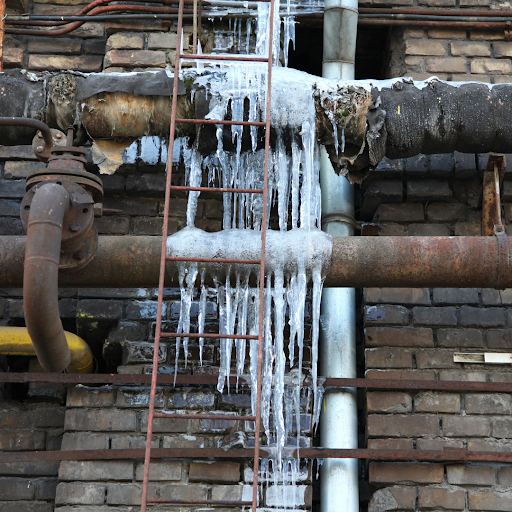How to Defend Your Pipes from Cold Weather: Specialist Advice
How to Defend Your Pipes from Cold Weather: Specialist Advice
Blog Article
Do you find yourself searching for facts and techniques around 6 Ways to Prevent Frozen Pipes?

Winter can ruin your pipes, especially by freezing pipes. Here's just how to stop it from taking place and what to do if it does.
Intro
As temperature levels decrease, the danger of icy pipes boosts, potentially resulting in costly repair services and water damages. Understanding how to prevent frozen pipes is essential for property owners in cool climates.
Understanding Icy Pipes
What triggers pipelines to freeze?
Pipelines ice up when exposed to temperature levels below 32 ° F (0 ° C) for prolonged durations. As water inside the pipes ices up, it expands, putting pressure on the pipeline wall surfaces and potentially creating them to break.
Risks and problems
Icy pipes can result in water supply interruptions, property damage, and costly fixings. Ruptured pipes can flood homes and trigger considerable architectural damages.
Signs of Frozen Pipes
Identifying frozen pipes early can prevent them from bursting.
How to determine frozen pipes
Search for reduced water flow from faucets, uncommon smells or sounds from pipes, and visible frost on exposed pipes.
Prevention Tips
Insulating at risk pipes
Cover pipes in insulation sleeves or utilize warmth tape to protect them from freezing temperatures. Concentrate on pipes in unheated or outside areas of the home.
Heating strategies
Keep indoor rooms effectively warmed, particularly areas with pipes. Open cabinet doors to permit warm air to circulate around pipes under sinks.
Shielding Outside Pipes
Yard tubes and outside faucets
Disconnect and drain pipes yard hoses before winter. Set up frost-proof faucets or cover exterior faucets with shielded caps.
What to Do If Your Pipelines Freeze
Immediate actions to take
If you presume icy pipes, maintain faucets available to relieve pressure as the ice melts. Use a hairdryer or towels soaked in warm water to thaw pipelines gradually.
Long-Term Solutions
Architectural changes
Consider rerouting pipelines far from outside wall surfaces or unheated locations. Include added insulation to attic rooms, cellars, and crawl spaces.
Updating insulation
Purchase high-grade insulation for pipelines, attic rooms, and wall surfaces. Correct insulation aids keep constant temperatures and decreases the risk of frozen pipelines.
Final thought
Stopping frozen pipelines needs proactive measures and fast responses. By comprehending the causes, indicators, and preventive measures, house owners can secure their pipes throughout winter.
6 Proven Ways to Prevent Frozen Pipes and Protect Your Home
Disconnect and Drain Garden Hoses
Before winter arrives, start by disconnecting your garden hoses and draining any remaining water. Close the shut-off valves that supply outdoor hose bibs and leave the outdoor faucet open to allow any residual water to drain. For extra protection, consider using faucet covers throughout the colder months. It’s also important to drain water from any sprinkler supply lines following the manufacturer’s directions.
Insulate Exposed Pipes
Insulating your pipes is an effective way to prevent freezing. Pipe insulation is readily available at home improvement stores and is relatively inexpensive. Pay close attention to pipes in unheated areas such as the attic, basement, crawl spaces, or garage. Apply foam insulation generously to create a buffer against the cold. You can also wrap your pipes in heat tape or thermostat-controlled heat cables for added warmth.
Seal Air Leaks
Inspect your home for any cracks or openings that could let in cold air. Seal any holes around the piping in interior or exterior walls, as well as the sill plates where your home rests on its foundation. Additionally, make sure to keep your garage door closed unless you’re entering or exiting. Leaving it open creates a significant air leak that can lead to frozen pipes.
Allow Warm Air Circulation
During cold snaps, it’s essential to allow warm air to circulate evenly throughout your home. Leave interior doors ajar to promote better airflow. Open kitchen and bathroom cabinets to help distribute heat consistently around the rooms. If you have small children or pets, be sure to remove any household chemicals or potentially harmful cleaners from open cabinets for safety.
Let Faucets Drip
A small trickle of water can make a big difference in preventing ice formation inside your pipes. When temperatures drop significantly, start a drip of water from all faucets served by exposed pipes. This continuous flow helps prevent the water from freezing. Additionally, running a few faucets slightly can relieve pressure inside the pipes, reducing the chances of a rupture if the water inside does freeze.
https://choateshvac.com/6-proven-ways-to-prevent-frozen-pipes-and-protect-your-home/

We had been guided to that write-up about How to Prevent Your Pipes From Freezing from a pal on another web property. Enjoyed reading our blog? Please share it. Help another person check it out. I thank you for your readership.
Start Now Report this page